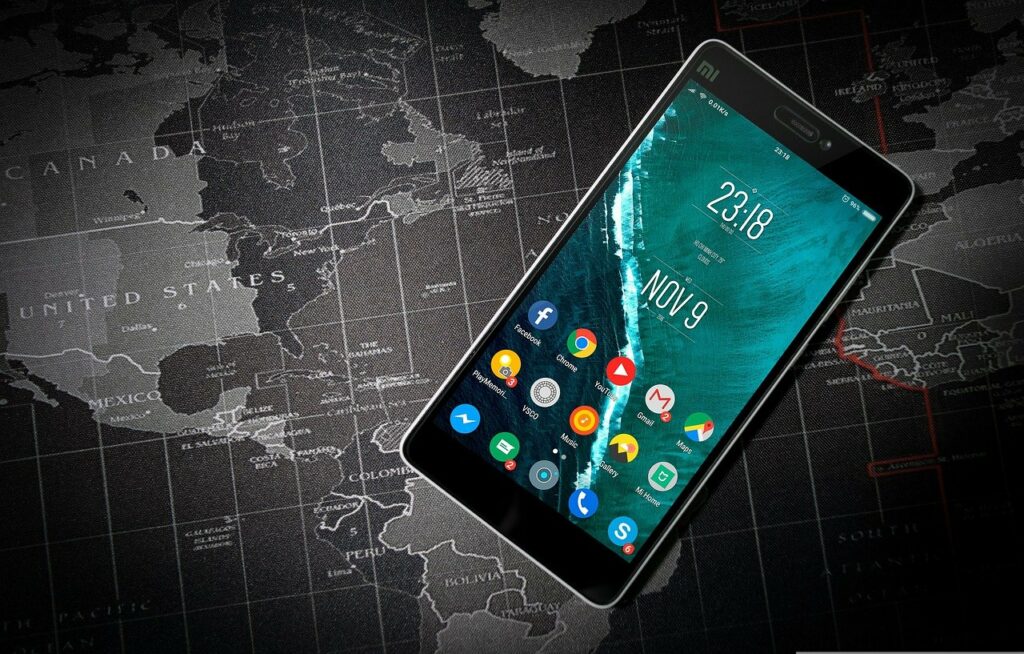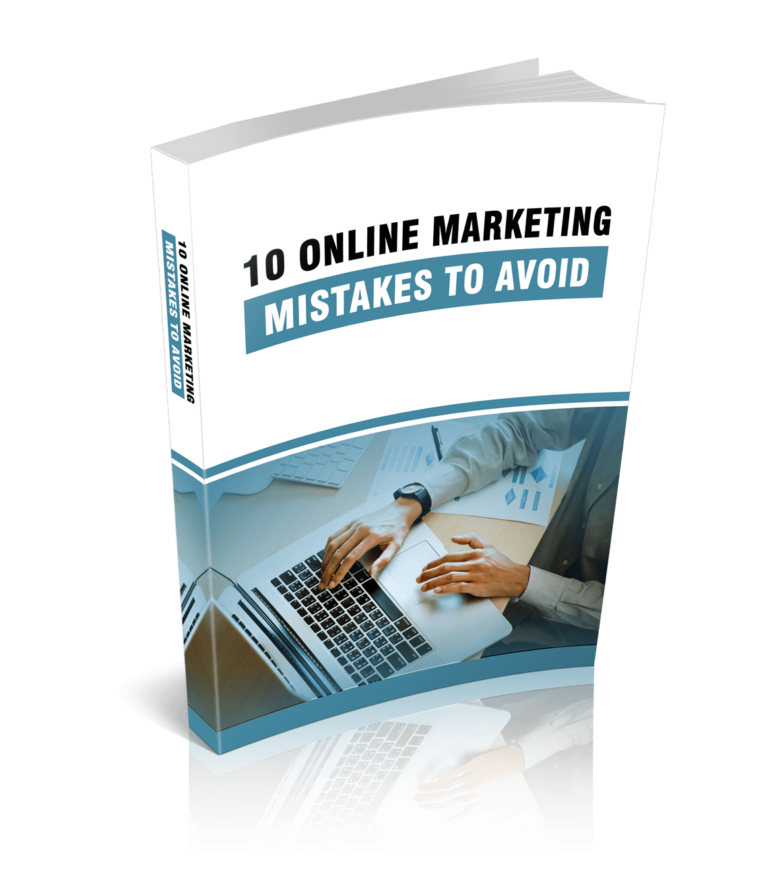Most successful businesses have mobile apps because they realize their significance in helping them connect with their audiences.
As a business owner, you need an app for your brand. It will give prospects easy access to your content, make it easy for people to buy your products, and ensure sales.
However, attracting the attention you need and ensuring people download and use your app can be challenging. Especially because of all the endless competition online.
Use this report to create a successful mobile app that will help you stand out from the competition. The kind that your target audience will download, use, and find helpful.
SUBSCRIBE TO INCOME PATROL
Get updates on the latest posts and more from Income Patrol straight to your inbox.
CATER TO YOUR AUDIENCE’S NEEDS
The best way to ensure you develop an app that will get you the attention you need is to know who you are creating it for. Define your audience, identify their needs and cater to them. Answer key questions; “Who is my target audience?” “Who is going to use this app?” “What are their needs?” “What common problems or pain points do they have?”
Be user-centric. Keep your target audience in mind throughout the process and develop an app that they’ll use and find helpful. Identify your audience’s needs and determine how you can cater to them.
Study user behavior to identify your audience’s needs. Use Google Analytics to track your website performance and find out what site visitors are interested in. Which pages do they interact with the most? What sort of content do they engage with? And What specific actions do they take on particular pages?
Practice social listening and use your social media pages to find out what users want.
Seek user feedback to get more downloads, more active users, and ensure success. You’re your social media followers about the new app that you want to create, who it’s for, and what it does. Ask them if they’ll be interested in using the app. Find out what specific features or information, they would like you to add. Listen to what they have to say and use the information you gather to design an app that attracts downloads.
Once you know what users want, focus on it. Set goals and clarify what you want to achieve with your app. Don’t add unnecessary features that don’t benefit users. Make sure every feature aligns with your goals and helps users carry out certain tasks and complete specific actions.
SOLVE A PROBLEM
Successful apps solve problems. So, make sure your app solves a defined problem. Identify common problems or pain points that your target audience has and offer a solution.
The type of problem you solve depends on who you are designing the app for. For example, you can design an entertainment app that solves boredom or an informational app that helps prospects understand your product better.
If you choose to go with an entertainment app, find a way to connect it to your brand. Offer content that’s in line with your business or find a way to incorporate your brand into your strategy. For example, you can run ads and promote your products or services within the app.
You can also develop an app for your eCommerce store and make it easy for customers to purchase your products from their mobile phones.
The key thing to remember is to keep your audience in mind, identify a problem they can’t easily solve, and offer the best solution.
Offer unique value to outshine the competition and keep people engaging with your content. Appreciate the time that users spend on your app and make every minute worthwhile.
Design an all-in-one platform that provides users with the best overall experience. For example, if you have an eCommerce store, make sure prospects can easily browse through your products, order anything they want, easily add items to their shopping carts, and complete purchases.
Don’t worry about adding all the important features during the initial stages, you can add them with time.
As you learn more about users and ask for their feedback, you will easily identify missing features and include them in your next updates and fixes. The most important thing to do when you are starting is to identify the main features and focus on them.
Make your app free to increase your chances of getting more downloads and active users. You can monetize it with in-app purchases.
If users find value in your app, they will not hesitate to use your links to make purchases.
You can also monetize your app through premium content or by locking certain features and making them accessible through once-off purchases.
KEEP IT SIMPLE
The most successful apps are intuitive, engaging, and easy to use.
People don’t like spending minutes trying to figure out how your app works. So, keep it simple. Make sure your app is user-friendly so you can get more downloads, retain your audience’s attention, and ensure success.
Design an attractive and easy-to-navigate interface.
Simplicity should be top of mind throughout the development process. Keep your app simple and responsive to give users a seamless experience and keep them coming back.
The first thing users think about when they launch your app is usability. So, make sure it’s easy for them to understand what to do, which steps to take, what to click on, and how to access certain information.
Make sure your app is responsive and adapts to any screen size because different people will access it from different devices.
Create an attractive landing page to attract more people. Incorporate high-res images, attractive calls to action, and the right color scheme. Be consistent. Use your brand’s primary colors and fonts to make it easy for prospects to identify you.
Make sure your content is readable. Use the right content structure, for example, headings, subheadings, and clear paragraphs.
Include social media integration to enable users to easily share your content with their networks. This is the most effective way to reach more people, attract more downloads, and engage new users.
KEEP USERS ENGAGED
Your success depends on user engagement. So, look for ways to keep users engaged so they continue returning to your app. Make sure your app has built-in virality to keep users from leaving and going to the competition. Add an interesting and valuable feature that makes them feel they will lose out if they left.
Consider Pinterest, for example. Their ‘Pinning’ feature allows users to create an archive of ideas and makes the app “addictive.” It gives the user the best experience and makes them think twice before leaving the platform.
Find out how you can get users to use your app regularly and give them extra value.
Consider gaming apps, for example. The main reason why they retain people’s attention is that they are entertaining and offer a strong sense of accomplishment with all the different levels users have to complete. The more milestones the user reaches, the more he or she wants to play.
Another exciting feature that makes the gaming industry a tremendous success is the ‘rewards’ or in some cases ‘coins’ users add to their ‘wallets’ after completing each level.
There are many ways to retain your audience’s attention and boost engagement. You just have to be creative about it.
PERSONALIZE THE USER EXPERIENCE
Personalize the user experience to ensure the desired results. Make sure your app offers a personal experience to help users easily connect with your brand.
Personalization is key to outshining the competition and ensuring you stand out from the crowd. So, prioritize it.
Study user behavior and customize content to meet specific needs. For example, you can customize your content based on browsing history, recent purchases, demographics, or customer location.
Find out what sort of information specific people are searching for within your app and meet their needs. Find out what products clients recently purchased and display similar products or content that promotes similar products.
Focus on demographics. Know the type of people that engage with your content regularly, the type of information they need, and cater to their needs.
The goal is to give users a personalized experience and show information that’s relevant to the user at that particular moment. Doing this increases your chances of not only retaining your audience but ensuring a sale.
ADD A KNOWLEDGE BASE
One of the most common reasons users uninstall apps and leave certain platforms is that they don’t have access to the information they need. So, create a knowledge base for your app and make sure users have easy access to all the important information. Don’t rely on your email support system alone because most people don’t have the patience to wait 24 hours for a response.
Have a FAQ section within your app. Identify common questions that people have concerning your product, service, or brand and add them to the frequent questions and answers section.
If you recently launched a new product, create a how-to guide to help users familiarize themselves with it. Especially if it’s difficult to use, has advanced features, or if you’ve received numerous questions on how to use the product.
How-to guides make it easy for first-time customers to use your product and minimize frustrations that come with delayed customer service responses. So, take advantage of that.
Your how-to guide doesn’t have to be lengthy. It can be a 600-word article or a 20-minute video.
Add a search option on your app to make it easy for users to quickly and effortlessly find the information they need.
Improve your support system to offer the best user experience and retain your audience. Add callback functions, toll-free numbers, or 24/7 email support to ensure you respond to every inquiry and keep potential customers from going to the competition.
CONSIDER CROSS-PLATFORM DEVELOPMENT
Implement cross-platform app development to minimize costs and save time. Develop an app that’s functional on iOS and Android operating systems.
Use the best cross-platform app development frameworks to ensure results. For example, React Native, Flutter, NativeScript, and Vue.
Go with the option that enables you to reach your goals, gives you the flexibility you need, and allows you to develop your app with ease.
One of the main things that lead to fewer downloads and less engagement is poor app performance. If your app takes too long to load pages, people are going to uninstall it and search for better options.
So, make sure your app operates at peak performance and has fast page load times. If you have in-app purchases or certain links that you want users to click on, make sure they are accessible within a short space of time. Don’t make users wait for more than 6 seconds to view certain content or access particular pages because it can force them off your app.
Run frequent tests and optimize your pages to ensure faster loading times.
If you have any technical issues that you need to work on, communicate in time. Make sure users are aware of the service interruptions and how long it’s going to take to resolve certain issues. Doing this shows users you value them and ensures they continue using your app.
PROVIDE OFFLINE FUNCTIONALITY
Many apps require an internet connection to function properly. However, it can’t be frustrating for users using an intermittent network connection. So, cater to various needs and make sure certain content and features are accessible offline.
Identify the main features and the most important information that you want users to have constant access to and make them accessible without an internet connection.
One of the main things that most people look for when deciding whether or not to download your app is offline functionality. So, integrate it into your strategy for more downloads and to influence users to choose your app above the competition.
The offline functionality of your app is key to attracting new users, getting more installs, boosting engagement, helping prospects connect with your brand, and having active users.
SIMPLIFY THE CHECKOUT PROCESS
If you have an eCommerce store or want users to purchase your products via your mobile app, simplify the checkout process. This is because half the people that abandon carts halfway to the final transaction are frustrated by the complicated or unending steps required to buy what they want.
So, minimize fields and only ask the user to input important information. Autofill certain information to speed up the process and make it less frustrating to users.
Some of the information that you can autofill are the zip code, country, and city.
Don’t force users to sign up for your newsletter. You can ask them to join your mailing list but make it optional. Give them the liberty to choose. Meaning if they choose not to subscribe, they still have the option to continue with the purchase. This is a great way to ensure customers don’t abandon their carts. So, make room for it.
Offer different payment methods and make sure customers can buy despite their geographical locations. Include the most common payment methods that are available worldwide to make it easy for people to transact.
Provide a way for customers to save their information such as payment methods, bank details, and shipping addresses to simplify the checkout process and make it easy for users to make purchases in a few clicks.
SECURE YOUR APP
Security is one of the most important things that you need to keep in mind when creating your app. It is your responsibility to protect user data and ensure secure transactions. So, identify and implement the best app development security practices.
Fix bugs regularly and run frequent updates to provide the best user experience and protect your app from hackers.
Users need to know that their information is protected and that it’s inaccessible to prying eyes. So, give them peace of mind and assure them their data is protected from unauthorized access.
Test your app before launch to ensure everything does what it’s supposed to do. Test all your links and buttons. Go through the checkout process to ensure everything works correctly.
Create a minimum viable product during the initial stages of the development process to determine whether or not people find your app useful and easy to use.
Find out what people think about your app, listen to feedback, and make the necessary adjustments. Ask at least 20 people to download your app, use it, and give feedback on their overall experience.
Run a beta test to identify bugs and other problems you may have missed during development.
Create a ‘beta group’ or ask existing customers to be your testers. That way, you will easily understand what users want and come up with a strategy that helps you cater to different needs.
Give your testers an easy way to share their feedback and let you know what they think about your app. For example, they can use email to talk about their experiences.
Encourage testers to be as honest as they possibly can so you can develop an app that people want, use, and find valuable. Ask beta testers to highlight the best features and the worst features.
Ask them key questions; “What is the main thing you like about this app?” “Did you find the app useful?” “Is it easy to use?” “Can you easily find the information you want?” “What feature did you find unhelpful?” “Would you download this app?” And “How often would you use this app?”
Use mobile app analytics to track app performance, study user behavior, and optimize your app to meet your audience’s needs.
LIMITED-TIME OFFER!
With LIFETIME ACCESS membership ($67) you have access to ALL exclusive materials (current and upcoming) for lifetime. We create new courses, ebooks, webinars and downloads on a regular basis. This offer expires soon and will be replaced with monthly-paid subscription, so hurry up! Get access HERE!





